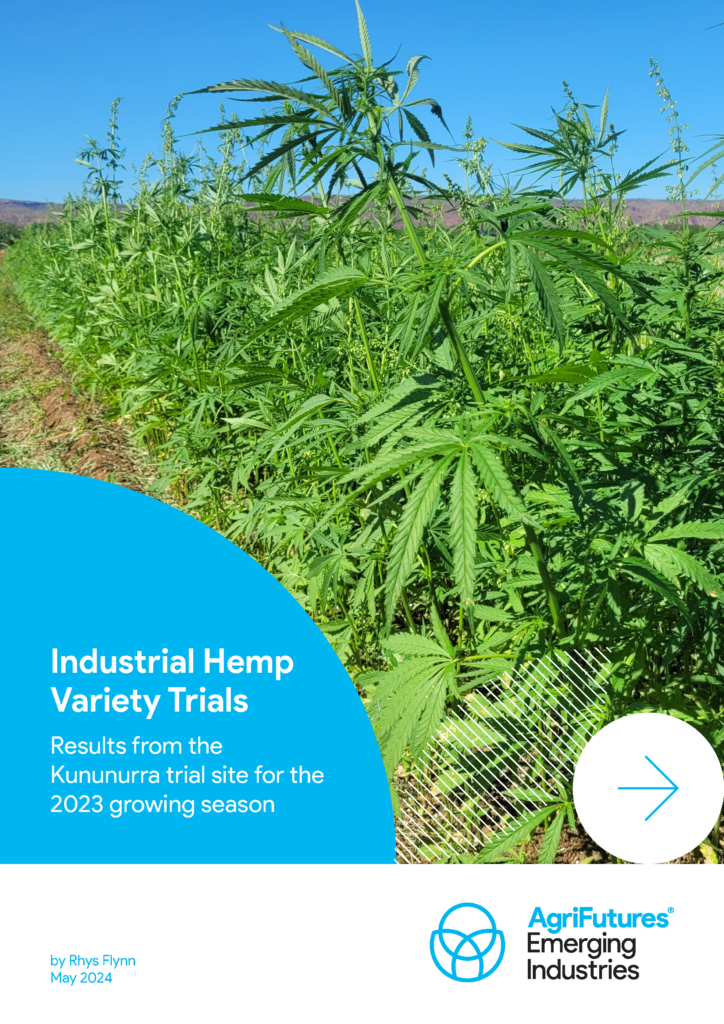Industrial hemp (Cannabis sativa L.) has potential for significant growth in Australia due to its wide range of sustainable credentials and uses. The benefits associated with hemp grain, including the oil profile, which has one of the best omegas 3:6 ratios of any plant-based oil, is a key factor in the potential of this crop.
A key initiative contained in the Australian Industrial Hemp Strategic RD&E Plan (2022-2027) is the implementation of nationally coordinated industrial hemp variety trials that cover the current and future major production environments. The Industrial Hemp Variety Trials (IHVT) program aims to provide Australian hemp growers with data on the growth and performance of available grain and dual-purpose hemp varieties, and high-quality, relevant information on the adaptation of these varieties to the Australian environment and factors that contribute to improved crop performance.
Trial sites are in diverse locations across Australia, including Katherine (Northern Territory), Epping Forest (Tasmania), Hamilton (Victoria), Narrabri (New South Wales), Stanthorpe (Queensland), Loxton and Maaoupe (South Australia), and Kununurra and Manjimup (Western Australia).
The 2023 trial at Kununurra generated information on 12 industrial hemp varieties; 10 of these were also included in the 2022 trial. Each variety was planted across three times of sowing and replicated three times.
The grain and dual-purpose varieties Ruby, Han Cold, King Gee and Yuma performed best for grain yield, plant height and total dry weight. Growers should consider Ruby, Han Cold, King Gee and Yuma for grain production in the region, and Han Cold, King Gee and Yuma for dual-purpose production. The trial will continue for a further year to validate the results from years one (2022) and two (2023), and to gather more robust data for assessing the performance of varieties in the Ord River region.





